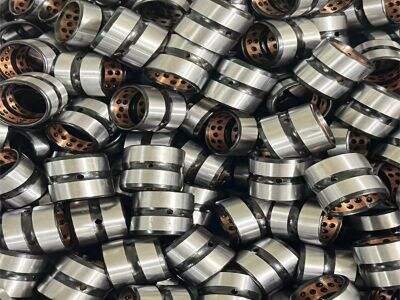नमस्कार, युवा पाठकों! क्या आप रेलगाड़ियों और पथरीले मार्ग पर रूचि रखते हैं? अच्छा, अगर आपको यह जानने में दिलचस्पी है, तो यहाँ एक बहुत ही महत्वपूर्ण बात है रेलवे और पटरी के क्षेत्र में — तत्वों का उपयोग और रखरखाव के खर्चों को ध्यान में रखकर! इन खर्चों के बारे में जानकारी रेलवे क्षेत्र के सभी हितधारकों को अधिक बोधपूर्ण फैसले लेने में सहायता करती है।
जीवनकाल खर्च क्या हैं?
पथ के भागों के संदर्भ में हम जिन जीवनकाल खर्चों का उल्लेख कर रहे हैं, वे पूरे जीवन में भागों को खरीदने और उनका रखरखाव करने के लिए आवश्यक कुल धनराशि है। यह हमें इस बात पर ध्यान केंद्रित करने में मदद करता है कि सबसे पहले से लेकर सभी धनराशि जो भारी उपकरण आपूर्ति भाग को खरीदने के समय लगाई जाती है। यह भाग की कीमत है, इसके बाद इसे ठीक करने, बदलने या इसका रखरखाव करने के लिए खर्च होता है। जैसे जब आप एक खिलौना खरीदते हैं, तो आपको बैटरी भी खरीदनी पड़ती है या जब यह टूट जाता है तो इसे ठीक करवाना पड़ता है। इन सभी विभिन्न खर्चों को सोचना महत्वपूर्ण है।
जीवनकाल खर्च क्यों मूल्यवान है?
तो दुनिया में हमें इन लागतों पर क्यों नज़र डालनी चाहिए? ठीक है, लाइफ़ साइकल लागतों को नज़रदारी करने से उपयोगकर्ताओं को ट्रैक्स को स्वामित्व और उनकी रखरखाव करने वाले बेहतर फैसले खरीदने और उन्हें सही ढंग से सेवा प्रदान करने में मदद मिलती है। वे इडलर एक्सकेवेटर अलग-अलग भागों की जीवनचक्र लागतों की जांच करके यह तय कर सकते हैं कि कौन से भाग समय के साथ पैसे बचाने वाले होंगे। तो, अगर एक भाग सस्ता है लेकिन टूट जाएगा और सुधारने में अधिक महंगा होगा, तो यह कुल मिलाकर एक अच्छा सौदा नहीं हो सकता। इन लागतों को जानने से पैसे फेंकने से बचा जा सकता है।
ट्रैक्स की सुरक्षा बनाए रखना
ट्रेन के भागों की नज़र रखना सामान्य जनता की सुरक्षा के लिए भी आवश्यक है। जब ट्रैक्स के मालिक या मरम्मत दल सस्ते भाग खरीदते हैं - और किसी भी कारण से (कंपनी की रेखाओं के भीतर या बाहर) सर्वोत्तम अभ्यासों का पालन नहीं करते - तो बड़ी समस्याएं उठ सकती हैं। असुरक्षित ट्रैक्स की वजह से खर्चीली और घातक दुर्घटनाएं हो सकती हैं। अगर आपको यह जानने की जरूरत है कि हेलमेट आपको कैसे मदद करता है, यहीं एक हेलमेट आपको साइकिल चलाने में मदद करता है एक्सकेवेटर H लिंक अच्छी स्थिति में होने पर और सुरक्षित रूप से चलना, यहां भी ऐसा है कि अगर आपके ट्रैक अच्छी स्थिति में हैं तो आपकी गाड़ी भी सुरक्षित रूप से चलेगी।
जीवनकाल की लागत कैसे जांचें
तो ट्रैक के मालिक और मरम्मत टीम कैसे अपने खंडों की लागत की पुष्टि करते हैं? उदाहरण के लिए, Loonsin जैसी कुछ विशेष विधियां सभी लागतों को समझने के लिए उपयोग की जाती हैं। ये विधियां केवल खंड की खरीदारी की कीमत को नहीं, बल्कि यह भी देखती हैं कि खंड कितने समय तक चलेगा, इसकी मरम्मत की आवश्यकता कितनी है, और यदि खंड को मरम्मत या बदलने की जरूरत पड़े तो कितनी लागत आएगी। ये विधियां ट्रैक के मालिकों और मरम्मत टीम को खरीदारी और मरम्मत के बारे में सही फैसले लेने में मदद करती हैं। यह उन्हें अपना पैसा सही तरीके से उपयोग करने में मदद करता है, और ट्रैक को बहुत दिनों तक अच्छी स्थिति में रखने में मदद करता है।
निष्कर्ष
सारांश में, ट्रैक कOMPONENTS के जीवनचक्र लागतों का पीछा करना रेलवे के लिए सुरक्षित रूप से कार्यरत रहने के लिए महत्वपूर्ण है। इन लागतों को देखने के लिए अच्छी विधियों का उपयोग करना, जैसे Loonsin द्वारा प्रदर्शित, यह सुनिश्चित करने में मदद करेगा कि हमारे ट्रैक और ट्रेन दशकों तक सुरक्षित रूप से काम करें! यह सब इस बात से सम्बंधित है कि हमारे चुनावों और हमारे निर्णयों में हम सावधान रहें, ताकि हमारे पास आने वाले वर्षों के लिए अच्छी ट्रेनें और ट्रैक हो सकें।

 EN
EN
 AR
AR
 BG
BG
 HR
HR
 CS
CS
 DA
DA
 NL
NL
 FI
FI
 FR
FR
 DE
DE
 EL
EL
 HI
HI
 IT
IT
 JA
JA
 KO
KO
 PL
PL
 PT
PT
 RO
RO
 ES
ES
 SV
SV
 TL
TL
 ID
ID
 SR
SR
 SK
SK
 SL
SL
 UK
UK
 VI
VI
 HU
HU
 TH
TH
 TR
TR
 FA
FA
 MS
MS
 BN
BN
 KM
KM
 LO
LO
 LA
LA
 NE
NE
 MY
MY
 SU
SU
 UZ
UZ

